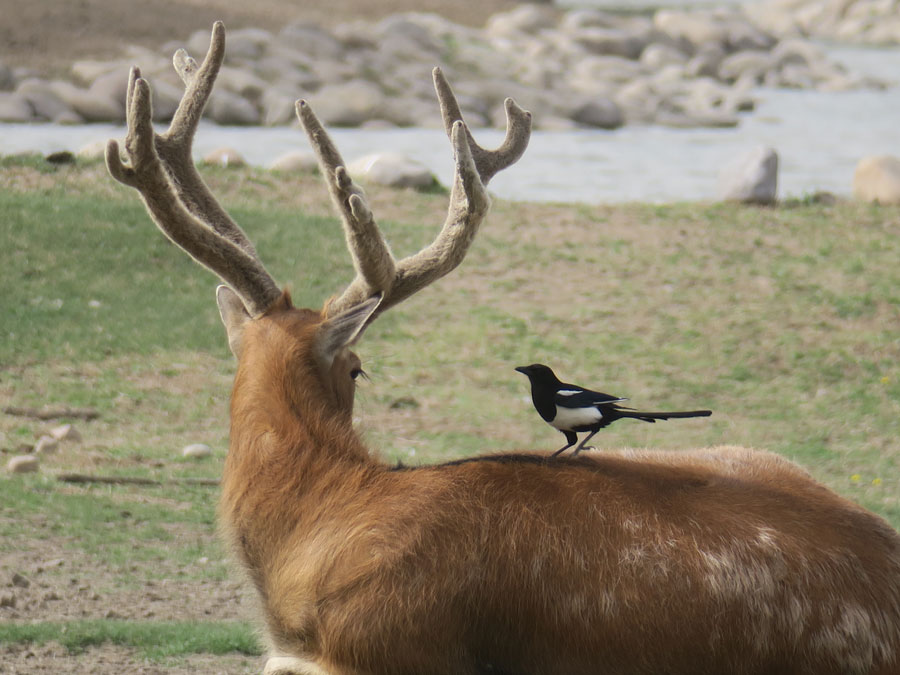Call of the wild


Genetic concern
According to Bai, with bigger conservation efforts, overhunting is no longer a threat, but other factors have become the focus for the protection of the milu as a critically endangered species.
Inbreeding has led to a number of reproductive problems, including low birthrates, which have led to frequent abnormal and difficult births, diseases, and an imbalanced sex ratio.
"It happens to many endangered species. It will take a long time for the milu to regain its genetic diversity," Bai says.
Since 2017, Bai's center has started a research program to collect data on the health conditions of both the milu and their habitat.
During the initial stages of their research, the center collected relevant data from six milu bases around China. Information on the deer population, inheritance, faeces, hormones and parasites were closely monitored using a painless sampling technique developed for wild animals.
"The goal is to establish a health database for the milu and a system to evaluate their habitat, so we have standard reference points if any abnormality occurs in the future."
Bai says cases in which a large number of milu deaths are reported due to disease outbreaks in recent years have proven that this kind of monitoring is meaningful for the milu, as a reintroduced species developed from a small founding population.
"By strengthening our monitoring processes, we will not only learn about the situation of their genetic diversity, emerging trends and evolutionary potential, but also formulate counter measures for major threats to reduce the risks of extinction, and lay a foundation for the long-term survival of the species," Bai says.
Cross-breeding projects are also carried out internationally.
In 2017, the World Wide Fund for Nature signed a memorandum of understanding with the Forestry Bureau of Hunan province to promote a program of crossbreeding for the milu jointly between Europe and China.
Under the plan revealed by the WWF, milu from Woburn Abbey Deer Park in Britain will travel to China to help breed younger generations by avoiding the degeneration of the gene pool.
The Beijing Nanhaizi Milu Culture Conference was recently held to celebrate the 33rd anniversary of the return of milu to China as a biological group.
The event was jointly organized by the Administration Department of Wildlife Protection and the Natural Reserve under the State Administration of Forestry and Grassland, Beijing's Daxing district government and the Beijing Academy of Science and Technology - in conjunction with two other organizations - at Nanhaizi Milu Park.
During the conference, both the local government and scientists eagerly expressed their hope of making milu one of the mascots for the 2022 Beijing Winter Olympics and listing it as a World Natural Heritage to further promote the endangered species.
According to Dominique Bauquis, a special representative who spoke at the conference on behalf of the Woburn Abbey Deer Park, these efforts to underline the importance of the milu can only help to raise the profile of this extraordinary species.
"Should the milu become one of the 24th Winter Olympics' mascots, it would place natural conservation at the forefront of the Games and give China a positive image in this field, as the tale of the milu epitomizes the outstanding human achievements in biodiversity conservation, and shows what international collaboration can achieve," Bauquis says.
"It has never been more relevant as a positive and incredible success story at a time when biodiversity is under threat worldwide."
























